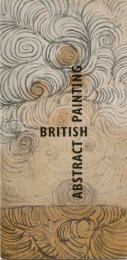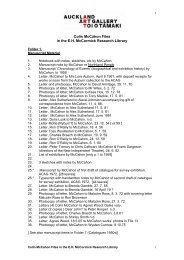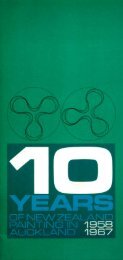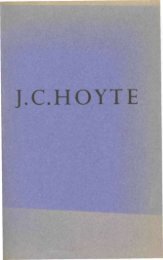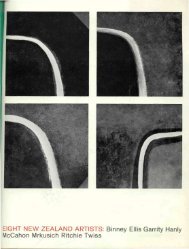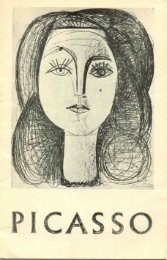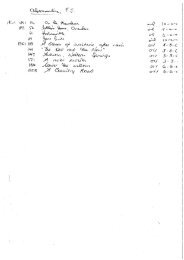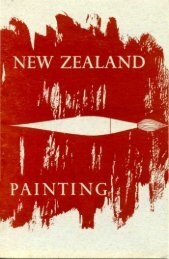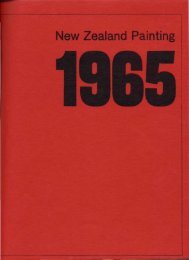Create successful ePaper yourself
Turn your PDF publications into a flip-book with our unique Google optimized e-Paper software.
PaintingsOther varieties of hanging mechanisms are available,such as D-rings or brass mirror-hangers. Nylon cord canbe used for light paintings and if picture-wire must beused, then multi-strand is the strongest. Picture wire cancause damage by poking into the back of a canvas paintingcausing distortions and cracking.Backing—backing boards should be used for paintingson canvas, and also for paintings on cardboard andwooden supports that are fragile or not sealed. Backingboards protect against blows to the reverse, deadinsects, dust and other grime that often ends up betweenthe canvas and stretcher beam. They provide a bufferagainst the environment, slowing the effect of temperaturefluctuations, high humidity, pollution and light.The type of backing that should be used depends onthe picture and what is available. Archival and normalcorrugated card can be used, as well as fluted polypropylene,foam core board, hardboard (heavy but strong) andeven acrylic sheeting (very useful if you wish the reverseto remain visible).Backing boards should be attached to the reverse ofthe frame (this can be facilitated by frame build-ups) byscrews, Velcro and/or tape. Taping provides a better dustand environmental shield, and various types can be usedsuch as double-sided, gummed cloth, aluminium tapeand gummed paper. If it is not possible to attach thebacking board to the frame and it must be attached tothe stretcher, do not attach tape to the canvas, as thiscould cause damage if removed when the canvasbecomes old and brittle.A backing board is an excellent place for labels; inno circumstances should labels or inscriptions be putdirectly on the reverse of the canvas.The Frame as Part of the <strong>Art</strong> Object—an originalframe can be an important part of the work of art. Theartist may have chosen it to complement or bring outsomething in the painting, and by removing it you couldalter the artist’s intent; or the frame may epitomise theage of the work, making it part of its history. Originalframes should therefore be reused if at all possible.Shadow Frames—a shadow frame is one that allowsthe edges of the painting to remain visible. This meansthat the painting will have to be screwed or glued to theframe from the back and cannot be held in by pressurealone. This is problematic because it involves permanentlychanging and possibly damaging the back of thepainting. Thin supports such as hardboard are difficultto attach to this type of frame without glueing, makingremoval extremely difficult. An alternative is to glueVelcro to the painting reverse and frame to hold the twotogether. Never glue over original inscriptions. Paintingson thick paper are best framed behind glass like works ofart on paper (see also page 14).StoragePaintings are safer on the walls than in poor storagefacilities where they are more likely to be knocked, torn,and become dirty and mouldy. Basic requirements of astorage area are a good environment with stable temperatureand humidity levels, no natural light and lowartificial light levels, clean, with good air circulation.The storage area should always be kept separate fromother activities to reduce the possibility of accidentaldamage. Other main points are listed below.Keep Paintings off the Ground—paintings are bestkept off the ground, primarily to avoid damage fromflooding, but also to protect the edges. Paintings shouldeither be kept in storage slots, drawers or screens forpermanent storage, or on padded blocks for temporarystorage. Padded blocks protect the base of the frame orpainting and stop slipping occurring. They can be madeof foam only, or foam on wood covered in cloth.Stacking Paintings—paintings should be stackedwith extreme care as damage to the artwork or frame isoften caused by this method of storage.Paintings should not be in direct contact with eachother and should be protected by a solid barrier such ascorrugated cardboard.Do not lean anything against the front or back of acanvas painting as this can result in distortions, crack-36



